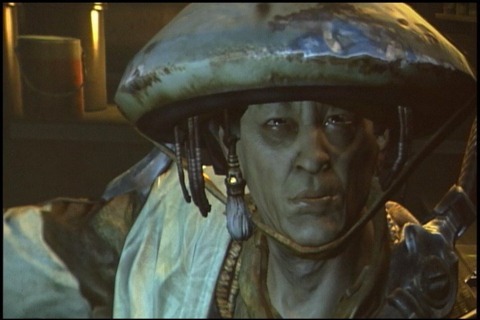AGDC 2008: id Software on...storytelling?
Notable tech developer takes time out to discuss how conveying stories goes well beyond the narrative.
AUSTIN, Texas--Yesterday, BioWare senior writer Mac Walters and senior cinematic designer Paul Marino held court at the Austin Game Developers Conference, discussing arguably what it does best: creating compelling stories. Today, id Software's Tim Willits took the stage, and unsurprisingly, he was there to speak about what his company does best: creating compelling technology. But he did so in the context of how id's technology balances its storytelling.

That focus might sound odd, considering that id has never been known for its storytelling prowess. Willits readily admitted that fact as he led off his talk.
"Public perception of the company is sometimes a bit skewed," said the id creative director. "In the past, yes, we have developed games with limited narrative. To say limited narrative equates to bad storytelling isn't quite right."
According to Willits, id's philosophy of storytelling goes beyond the "paper story," or the purely narrative part, and extends to all of the information derived from the feelings and experiences associated with playing the game. Other factors that impact storytelling within a game involve the players' preconceived notions, choices made and consequences, replayability, and player skill. There's also the matter of the player's ability to enjoy a story in the context of a well-balanced game.
"Storytelling through experiences is the cornerstone of id game design," claims Willits, and it is this fact that is key when the company develops new technologies. Although some may say telling stories in such a way is the easy way out, Willits argues that it is much easier to write a great narrative than tell a compelling story. "You can put a great story into a boring game, but the experiences are so limited that you'll still end up having a boring game."
Striking the right balance between narrative, game design, and technology, then, is very important for any game developer that creates all three in tandem. Willits argued that when one reigns supreme, a game is typically very shallow.
So how are these elements balanced?
"How id does it is first start with a solid, straightforward plot," notes Willits. "Start with something that is easy for players to get their minds around. Id likes to focus on good versus evil." Once the top-level story is conceived, Willits advocates hiring a great writer who understands games and how to relate information through experience and player choice, rather than always through the spoken word.
When that story is being created, Willits continued, it is important that the story is dynamic and flexible enough that it can be tweaked and adjusted so as to accommodate technical limitations or design choices.
The design fundamentals thus accounted for, Willits went on to speak on how these principals play out in the publisher's upcoming postapocalyptic first-person shooter/racer Rage. Summarizing Rage's plot, Willits said that the game takes place 50 to 100 years in the future, when the government has learned that an incoming comet will destroy all life on the planet. In response, an ark program was initiated, whereby after the comet hits and the dust settles, those preserved in the arks will reemerge and populate the world. As things turn out, more people survive the comet than was previously estimated, and the survivors built a society with no rules, order, or government. So when players emerge, they find a lawless world in which they first must learn to survive and then help overthrow a malevolent controlling faction.
Willits noted that Rage's story is far more expansive than id's previous storytelling efforts, and the company's intriguing Tech 5 game engine has been built to accommodate this story. To add to the level of immersion, Willits said that the entire world was created as a single texture, aptly named the megatexture, which lets artists create truly unique environments in which every pixel can be something new.
However, one problem with doing this has been media size. Although media size is virtually unlimited on a PC, the PlayStation 3 and especially the Xbox 360 are constrained to what can fit on media discs. As a result, id has tentatively decided to split the game into two acts, primarily so that they could break the megatexture into two. What this would do is let the company ship the Xbox 360 game on two discs to accommodate its limited media space. Willits noted that it was important for the storyline to be dynamic so it could be altered to accommodate this high-level change.
id has encountered a number of other challenges in bringing Rage to the Xbox 360, PlayStation 3, PC, and Mac. Media streaming was particularly a problem on the PS3 due to Blu-ray, and texture compression was used heavily so that distant scenery could be factored into storytelling information. Willits also said that though there were large wastelands, they needed to be economical with level designs, so they created small, modular levels that were also highly dynamic so as to accommodate level designers and tech capabilities.
Other challenges included development time, especially in light of creating new technology, as well as asset development in a large world; AI and animation for a variety of character models; physics, notably in the driving sector; and NPC interaction, which Willits claims has been greatly improved over Doom 3.
Willits closed by teasing the future of Rage. He said that the universe of Rage was intentionally designed so that players were aware that the events they were running through were merely a small part of a reaching story, something along the lines of what LucasArts was able to do with Star Wars. Willits was keen on pointing out that when players finish Rage, they'll know they're done with the game, but will also know there is much more in store for them.
Got a news tip or want to contact us directly? Email news@gamespot.com
Join the conversation